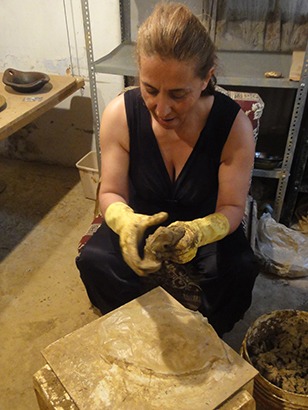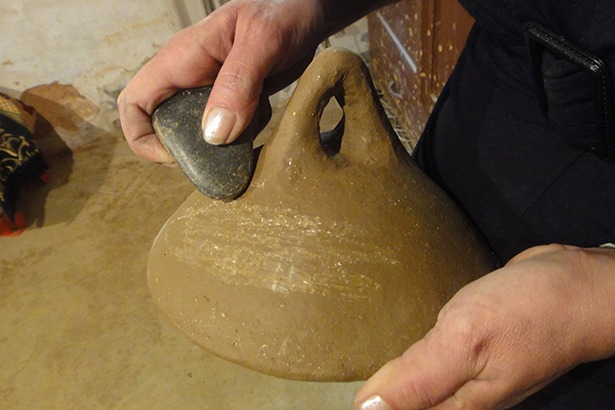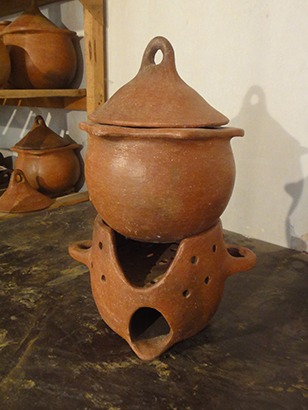In the remote village of Assia in Batroun, two houses perpetuate a tradition that has existed for a very long time. Sana Jabbour follows her mother’s footsteps and continues to make pottery, a time-honored craft that was once a main source of income, in the village of her ancestors.
You can recognize Assia pottery by its traditional shape and reddish color. It is 100% handmade, meaning not a single machine is used, not even a turntable. It is the most ancient form of pottery. What makes it so unique is its health benefits, in that the pieces are made of natural components. It is not painted and no artificial material is ever used.

Assia pottery’s composition is quite simple: pottery sand that is extracted from the land and a quartz-like stone that is grinded and mixed with it. The process of making the pottery is a bit more complicated and can take up to a month to finish a single piece.
First comes the making of the clay. Cleaning the sand begins by wetting it, then letting it pass through a fine sieve which will separate it from any small rocks and stones. Then the quartz is finely ground and mixed with the sand. The mixture is laid on concrete to dry to get a clay-like matter.

Before starting any piece, the clay is kneaded and made more malleable to be able to shape it in any form. Once fashioned, the piece will dry for a day. With a pebble, the potter then proceeds to smooth the surface.
It is left to dry again, after which the craftsperson uses a knife to remove thickness from the piece. After a day or two left in the shade, away from sun and wind, another round of polishing with the pebbles is done. The piece should then dry for a week or two, after which it will get a final polish layer (also done with pebbles) to make sure all roughness is gone. At this point, the piece becomes shiny without the use of any varnish material, simply by polishing it with the pebble. The item is kept in a room to fully dry and then cooked in a wood oven. During the final phase, many of the pieces are ruined due to mishandling or small defaults in the fabrication, making the whole process quite tiresome.
For Sana, who learned the craft from her mother, perpetuating this tradition is her passion. Although she continues to make the same shapes her ancestors did, she has also given in to more modern requests and added a coffee maker and a mug to her line of products.

However, she refuses to make decorative items, as Assia pottery’s main feature is its health advantages for cooking and general use.
You can sample Sana’s work every Saturday at Souk al Tayeb or if you are up for the drive, you can meet her in Assia and see her at work.
Contact: Sanaa Jabbour +961 3 630 626
Article edited on November 13, 2021
Loading

